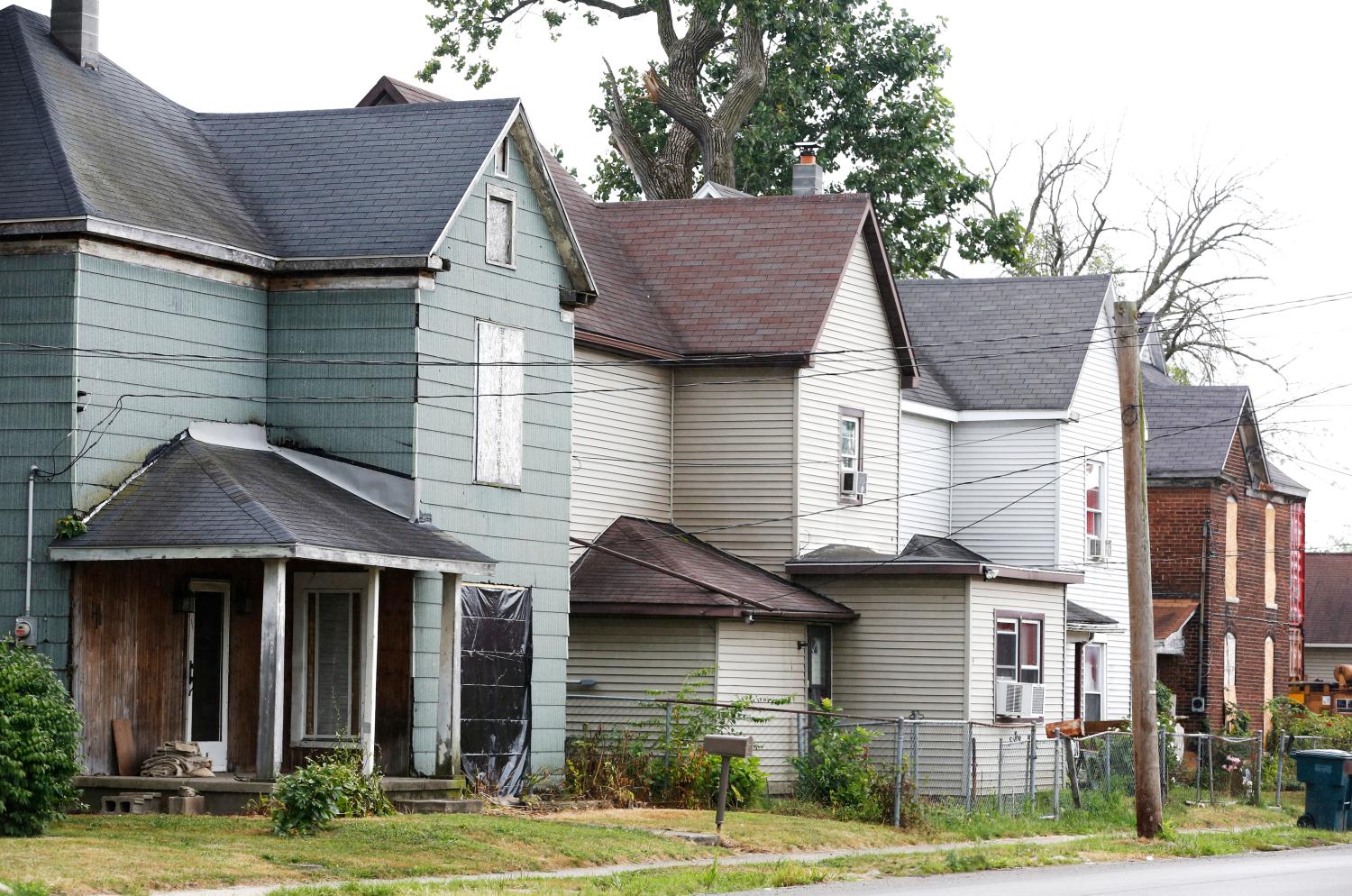Back in 2009, when Congress and the Obama administration were crafting the Recovery Act, Rep. Jim Clyburn saw an opportunity to begin to target more federal resources to communities grappling with persistent poverty. He called his plan 10-20-30. As the title suggests, the plan is straightforward, at least on its face. Any federal program subject to this plan would be required to direct at least 10 percent of total investments to counties where at least 20 percent of the population has lived under the federal poverty line for at least 30 years. The Recovery Act ultimately applied the 10-20-30 plan to three rural development investment programs totaling $1.7 billion.
Following these relatively modest origins, Rep. Clyburn introduced legislation in 2013 to significantly expand the application of the 10-20-30 plan. His approach has attracted serious recent attention from both sides of the aisle. With Speaker Ryan’s tacit support, House committees added the formula to appropriations measures affecting 17 different programs, including spending programs in the Departments of Commerce, Justice, and Treasury, among others. And in a recent New York Times op-ed where Democratic presidential nominee Hillary Clinton presented her poverty plan, she wrote, “Tim Kaine and I will model our anti-poverty strategy on Congressman Jim Clyburn’s 10-20-30 plan” in order to “ensure that our investments are reaching the communities suffering the most from decades of neglect.”
Such bipartisan momentum—around anything, let alone efforts to address need in communities struggling with entrenched poverty—is no small feat in Washington these days. It’s also an important recognition that, as currently designed, federal funding streams often miss many hard-hit, chronically poor communities. Part of the appeal of Rep. Clyburn’s plan is that it offers a concrete response to those funding gaps that manages to put real money on the table without having to wring new dollars out of a gridlocked Congress.
Given the rising support for the idea, it is worth stepping back to reflect on whether a formula that began as a way to redirect a modest portion of rural development investments to persistently poor rural counties can be effectively applied at scale, across a much wider range of programs. Three challenges in particular should be addressed.
1. Counties may not be the right targets
Hillary Clinton has said that 10-20-30 “is a program that would target a lot of places in America, not only inner-city poverty but rural poverty, Indian country poverty, coal country poverty.”
But in practice, focusing the selection criteria at the county level—as Rep. Clyburn’s approach does—yields a collection of communities that are overwhelmingly rural. Though the list of eligible counties varies depending on the data source used (see maps), upwards of 80 percent fall outside of metropolitan areas.
Communities who would not make the cut under the 10-20-30 formula include some of those with the deepest and most entrenched concentrations of urban poverty, like Detroit’s Wayne County, Los Angeles County, Chicago’s Cook County, Cleveland’s Cuyahoga County, and the District of Columbia.
If 10-20-30 was solely aimed at addressing longstanding funding gaps in rural America, then counties may be an appropriate geography to target. Indeed, in the context of the Recovery Act, the largely rural list of counties eligible for 10-20-30 aligned relatively well with the rural development investments to which the plan applied. But if a scaled-up version of this program is meant to address needs in a diverse array of persistently poor communities that exist across the country—whether urban, suburban, or rural—that would require a more nuanced targeting mechanism that reaches below the county level.
To be sure, Clinton’s op-ed used the word “communities” rather than “counties,” perhaps signaling that her implementation of 10-20-30 might use different geographic targeting than Clyburn’s. But in the meantime, Clyburn’s county-based plan has made it into a growing number of congressional proposals, which should not only elevate the issue of geography for lawmakers, but also spark candid discussion about how far its reach should extend.
2. The 10 percent set-aside may not be an effective approach for all funding streams
The 10-20-30 approach began with a few rural-focused investments, but Rep. Clyburn’s 2013 legislation signaled his broader ambitions for the plan by proposing its expansion to funding streams in the Departments of Agriculture, Commerce, Education, Labor, HHS, HUD, Justice, EPA, DOT, and Treasury. While that bill did not become law, as Politico reported, lawmakers this year are proposing to extend the reach of 10-20-30 to programs “including Agriculture Department support for rural housing and broadband services; Commerce Department public works programs; Department of Justice drug courts; the Environmental Protection Agency’s Brownfield grant program to clean up contaminated properties; and the Treasury Department’s community development financial institutions program.”
As the proposed scope of this plan grows, lawmakers must confront the potential limitations of a uniform 10-percent funding threshold. Any such threshold is, by design, somewhat arbitrary. But since reapportioning these funds may mean a cut for some existing recipients, we should not gloss over this threshold question.
At the same time, policymakers should consider the possibility that any such carve-out may not be effective for certain funding streams. Take the Community Development Financial Institutions Program. Communities can only benefit from this program if they are served by a registered CDFI. Yet only about one-fifth of persistently poor counties are home to such an entity. Does it make sense to subject this funding stream to the 10-20-30 formula, as proposed, when so few target counties qualify? If so, should the carve out for persistently poor counties still be 10 percent? This example underscores the potential nuances and challenges involved in applying 10-20-30 to a broader array of programs, and highlights a key feature that will help determine the success of a scaled-up version of the plan: capacity (or lack thereof) in persistently poor communities.
3. Some poor communities need capacity building as much as cash
More resources are undoubtedly needed to address entrenched poverty and economic distress in persistently poor places. Indeed, one could argue that more dollars are needed to address poverty than can be mustered through a redistribution of existing dollars. But in any case, more dollars do not equal more impact if the communities in question are not equipped to absorb and effectively expend those resources.
Disparities in the geography of federal investments can result from the design of allocation rules, an issue the 10-20-30 approach seeks to address. But these gaps can also emerge from significant variations in the capacities and resources across communities’ civic, nonprofit, and governmental systems. Successfully attracting and implementing federal funding (or any kind of funding for that matter) requires a certain amount of institutional and/or jurisdictional capacity to navigate the application process, handle project implementation, and comply with reporting requirements—capacity many persistently poor places may lack.
To ensure additional dollars allocated to these communities translate into impact, policymakers should consider adding explicit language around capacity building in underserved areas. They could look to the USDA StrikeForce program. This program identifies sub-county pockets of persistent poverty, and USDA staff then “work with state, local and community officials [in these areas] to increase awareness of USDA programs and help build program participation through intensive community outreach and technical assistance.” Programs like this, as well as Strong Cities Strong Communities and Promise Zones demonstrate that capacity building and technical expertise are part and parcel of successfully attracting and implementing investments to improve outcomes for people and places. Making technical assistance and capacity building an explicit part of the 10-20-30 plan would not only underscore policymakers’ commitment to ensure federal dollars reach persistently poor places, but also make those investments more effective in practice.
Build on the momentum generated by 10-20-30, but address its potential limitations
Opportunities to make meaningful changes to federal funding in ways that would benefit distressed communities don’t come around very often. The momentum and attention the 10-20-30 plan has garnered from Republicans and Democrats alike offers one avenue to begin to respond to gaps in the geography of federal funding. Addressing the issues raised here can help policymakers translate a worthy idea into effective implementation.
The Brookings Institution is committed to quality, independence, and impact.
We are supported by a diverse array of funders. In line with our values and policies, each Brookings publication represents the sole views of its author(s).







